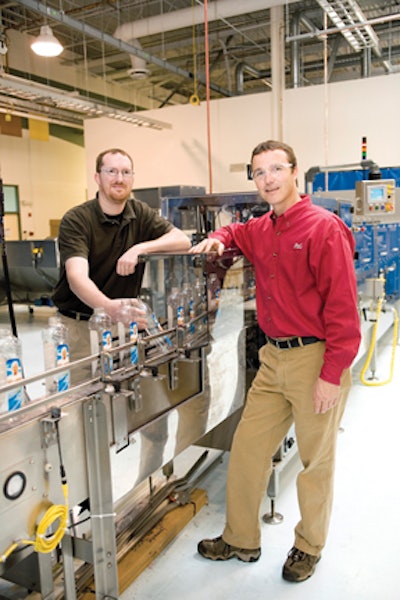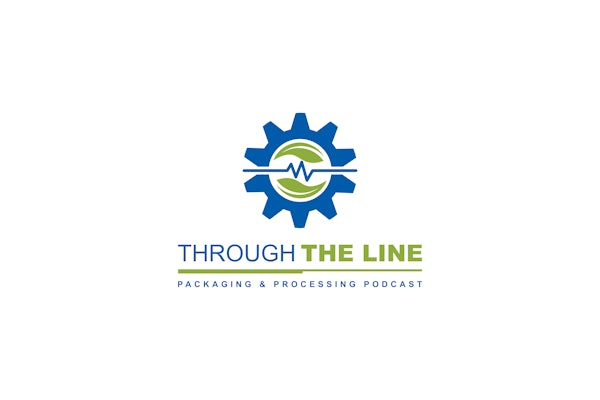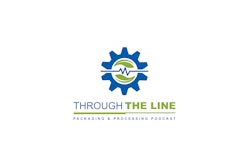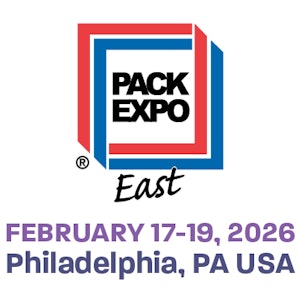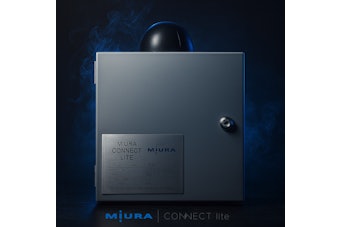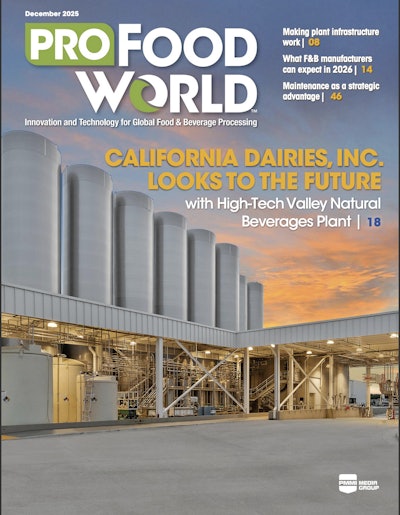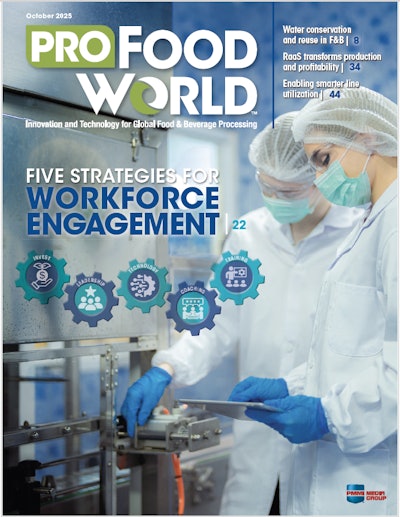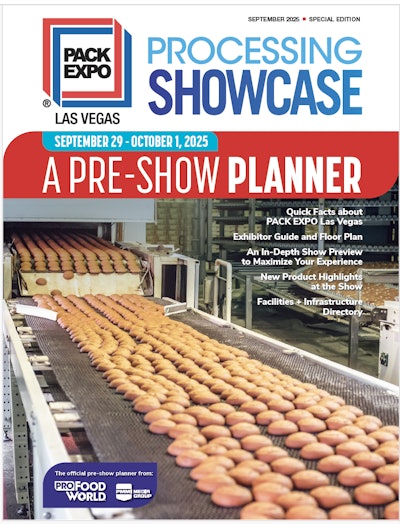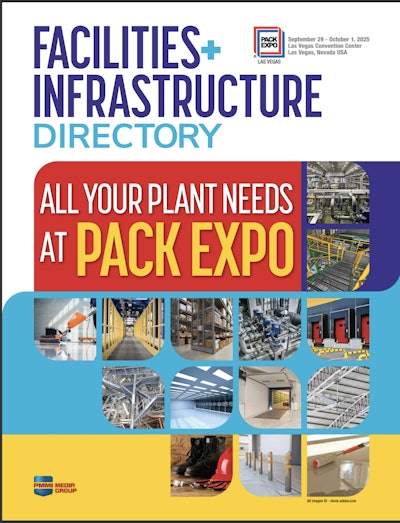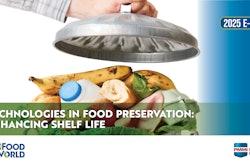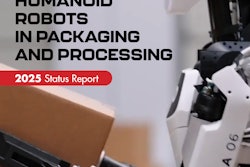Packaging machines have many more features today than in the past. Original Equipment Manufacturers (OEMs) are addressing issues that have an impact on their customers’ bottom line. They design their machines for greater product diversity, higher rates & performance, easier changeover, improved human interfaces, built-in quality check systems—the list goes on.
Automation technology has opened the doors for significant innovation that addresses many of these issues. However, a number of hurdles remain, for both end users and OEMs. ARC Advisory Council identified some of the problems in a 2008 report:
“Packaging machinery is increasing in complexity. More machines are including many axes of servo drives, integrated robotics, vision systems, machine fault/performance analysis, and communications for integration with line and production management systems. However, there are no consistent standards for software development—even between like machines from the same OEM. As a result, operator and technician training and support are becoming increasingly challenging; and horizontal and vertical integration remains difficult and time consuming.”
End users spend significant money and time engineering the integration of OEM machine control systems into cohesive and well managed packaging lines. Their engineers must ensure that OEM control code performs as needed on machines coming into their plants. The engineers also have to structure software interfaces between machines in a line to ensure line coordination. Overall Equipment Effectiveness (OEE) is another key priority, so the engineers must transfer OEE data from individual machines into business information systems.
Once this fundamental engineering work is complete, the end user has to focus on the operators who need to be trained on how the machine works; their knowledge of its operational states is crucial. Technicians are in the mix, too. They need to have some level of training in machine-control software troubleshooting for when the inevitable happens: the machine stops, it won’t restart, and it’s not obvious why.
The need for a standard
As the ARC document points out, there have been no consistent machine software structure standards. Without intervention, machine software will continue to become even less consistent, negatively affecting both end-user and OEM business bottom lines. This lack of consistency drove the industry group OMAC (The Organization for Machine Automation and Control) to develop PackML (Packaging Machine Language) standards for improving machine-to-machine integration, extending operator capability, and improving enterprise integration. The official ISA-TR88.00.02 PackML Standard was released in August 2008.
PackML builds off a proven ISA industry standard in S88. Benefits include:
• A consistent look and feel for the operator and technician
• A foundation for vertical and horizontal integration
• Standard information in/out of a machine
• Packing line plug-and-play functionality
• More consistent end user specifications
• Faster software development time
• Reduced debug time through more robust and modular software programming
• Ultimately, efficiency in reusable hardware and software components and machines that cost less to build, use, and maintain.
It’s important to point out that it isn’t just the end user who stands to gain from PackML. The OEMs benefit, too, because by using the concepts provided by the standards, they can focus their software effort on competitive-advantage features instead of wasting valuable time on basic programming and integration features required for any machine.
P&G is a leader in adopting PackML concepts to reduce integration and support costs. P&G and other major end users of packaging equipment now demand use of this programming standard on their key OEM equipment. To aid machine automation software developers in achieving a clean and efficient implementation of PackML, P&G developed a PackML Implementation Guide (available at www.omac.org). The guide, software template, and help files aid end users, OEMs, and integrators alike to efficiently apply the PackML concepts based upon the ISA standards.
So what happens when a packaging machine comes into a P&G plant and it’s not PackML-compliant? In the case of a Model 1000 plastic bottle unscrambler from Pace Packaging Corporation, P&G elected to convert it to the PackML standard. The machine, which has a rated capacity of 350 bottles/min, was installed in 2009 in a line capable of running a variety of liquid detergent products. P&G has worked with many consultants on applying PackML standards. On this particular project, the firm worked with Tata Consultancy Services (TCS) to convert the unscrambler’s existing software to the concepts provided by the PackML and ISA standards.
Objectives
The project objectives included:
• Understanding how the machine worked
• Decomposing the machine into a modular structure as defined by the PackML and ISA standard (e.g., Equipment Modules, Control Modules, etc.)
• Implementing needed PackML states (e.g., Starting, Execute, Stopped, Aborting, etc.) and directing action to the appropriate Equipment Modules and Control Modules
• Building the PackML operator interface
• Following the OMAC PackML Implementation Guidelines
• Validating and commission
Jason DeBruler, P&G engineer and author of the OMAC PackML Implementation Guide, worked with TCS on this conversion to ensure the S88 concepts were well understood and executed. A week of effort was spent on the software conversion. Some time was also spent understanding how the machine worked.
TCS implemented a modular, structured, standard code on this machine and met the project objectives. TCS applied PackML using the PackML Implementation Guide and template endorsed by the OMAC organization. The PackML implementation resulted in PLC code and HMI screens that are simpler to understand and troubleshoot. Some of the benefits include:
1. Simplification of the machine operation. Per S88, the unscrambler now runs using defined states and modes. The key program conditions used to perform an action are based on the mode and state. The code is much simpler than conventional permissive logic that typically varies from programmer to programmer.
2. PLC code now uses modular programming techniques. This means that the software code is organized into reusable blocks of code. This has greatly increased the reusability of machine logic while making the software easier to read and more robust.
3. Recipe control is simplified. The user can now do Save, Copy, Delete, and Save As for existing recipes. Previously, only predefined recipes existed and adding a new recipe was a big task.
4. Alarm management is simpler now. In the existing logic there was no categorization of alarms. PackML alarms are now divided into categories. Depending on the situation, the appropriate alarm category action is taken. For example, if it is a Category 0 alarm, the machine will go from the Execute to the Aborting State. If it is a Category 2 alarm, the machine will move from the Execute to Stopping State. In the existing logic, the user was not able to identify which alarm actually came first and stopped the machine. This can now be identified. Also, after implementing the PackML template, a unique code is given to each alarm that can be passed to the user’s MES (Manufacturing Execution System) solution to monitor the uptime and downtime of the machine.
5. HMI screens provide more information. The PackML screen lets the user know what state the machine is in. This makes it easier for a technician to identify which part of the software code is currently active. Further, alarm and recipe screens are more informative and user friendly.
“The OMAC implementation guide and template simplified the process of applying PackML,” says DeBruler. “These tools have helped engineering firms, in this case TCS, quickly get up to speed and apply PackML.”
“This project also opened our eyes to how PackML can help technology providers offer a much better service to OEMs and end users by delivering easy-to-implement PackML templates,” says Dan Amundson, a control systems engineer in P&G’s corporate engineering group. “Additionally, MES suppliers can aid end-users with OEE management by integrating PackML into their products, further simplifying vertical information.”
Next steps
So where do P&G and Pace go from here? P&G is already reaping the rewards of PackML through lower machine-to-machine and business information system integration costs. The company continues moving forward with plans to broadly implement PackML on packaging platforms.
Pace Packaging’s controls team is fully onboard with this PackML execution for their machine. Pace has embraced the PackML concept and intends to make it available to other customers and other machines they offer. Pace president Ken Regula sums it all up this way: “The benefits of the PackML standards are clear and will provide the end-user who embraces this system with readily measurable results. OEMs should not hesitate in starting to implement PackML as their programming standard.”
